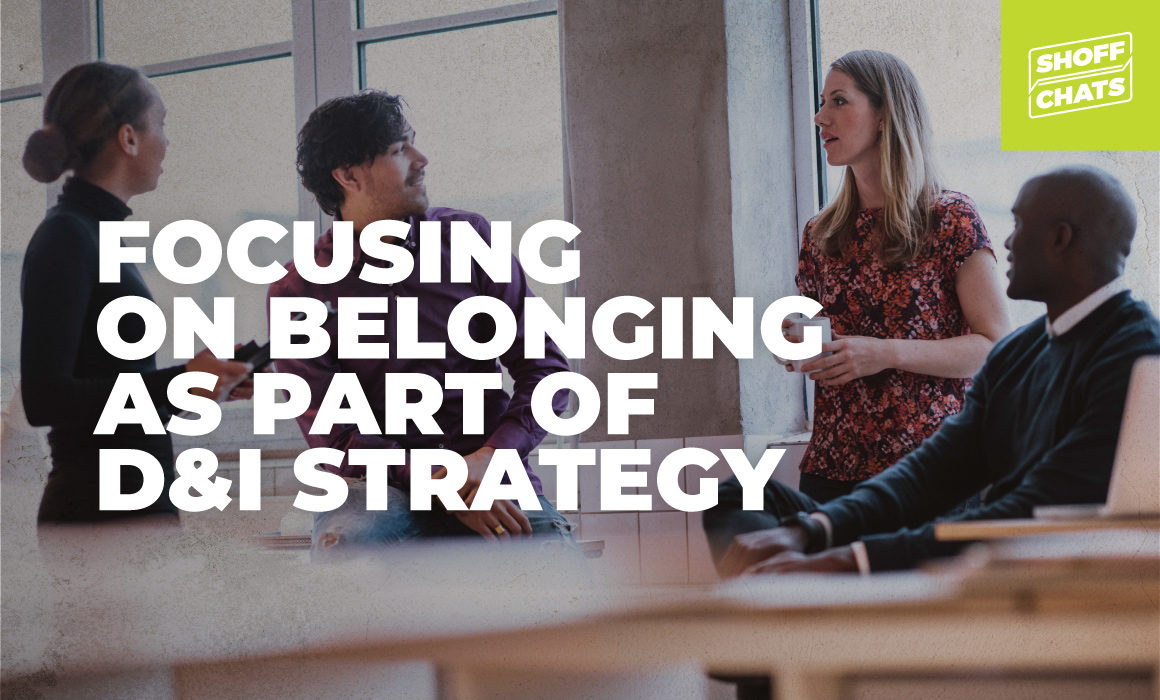Focusing on Belonging as part of D&I Strategy
In the current climate, where issues of racial equity are driving a national conversation, many companies are reexamining their approaches to diversity and inclusion (D&I) and acknowledging the need to ensure their efforts are not merely superficial. In a recent episode of Shoff Chats, we facilitated a discussion led by Thresette Briggs and Brandi Davis-Handy around the idea of belonging as one strategy for more authentically and meaningfully advancing D&I initiatives, and the role of communicators and business leaders in these efforts. Here are three key learnings from our chat:
Prioritize Belonging as a Building Block for D&I
You can think of diversity as a fact, and inclusion as a choice, but belonging is a feeling – an experience of being truly valued and welcomed. Belonging is a fundamental human desire, and as such can be considered a precursor or building block for diversity and inclusion. Companies should not only examine demographic metrics if they want to know how they’re performing on issues of D&I; they should also examine their culture through the lens of belonging. Are your employees valued as their authentic selves? Are diverse perspectives sought out and honored by leaders? Is belonging reflected in the core values of your organization? Leaders must prioritize belonging as a foundational element of organizational culture if they truly want to improve/increase diversity and implement inclusive practices.

Acknowledge Bias and “Blind Spots”
Everyone has some level of implicit bias as well as “blind spots” that can hinder leaders’ ability to foster a culture of belonging. Self-awareness/mindfulness of bias, and a willingness to admit we all make mistakes and apologize when wrong are steps in overcoming these challenges. Leadership teams must commit to self-reflection and align around these steps if belonging is to become a meaningful part of company culture. Here are some resources to learn more about implicit bias: Harvard resources and Peace Learning Center resources.
Implement Flexible Engagement Strategies
Organizations should recognize that the employee experience is just as important as the customer experience when it comes to business success and reputation. And – just as consumers want products and services that meet their unique needs, employees want to be recognized and rewarded for their unique values, perspectives, and strengths. A company’s systems and methods of leading and engaging employees must be flexible enough to recognize and accommodate different backgrounds, cultural norms, and what’s important to people. Among other drivers, employee engagement has been said to come down to a sense of belonging, some level of autonomy over your work, and the ability to connect meaning and purpose to your work. But these mean different things to different people or groups, so organizations should consider how these drivers manifest themselves differently among their employees and adjust strategies and tactics accordingly for maximum impact and meaning.
If you need support in your Diversity & Inclusion and Employee Engagement initiatives, please contact Meg Marra.
Check out our Shoff Chats page to see our upcoming schedule. Want to suggest a topic or interested in speaking in a future chat? Contact Meg Marra.


